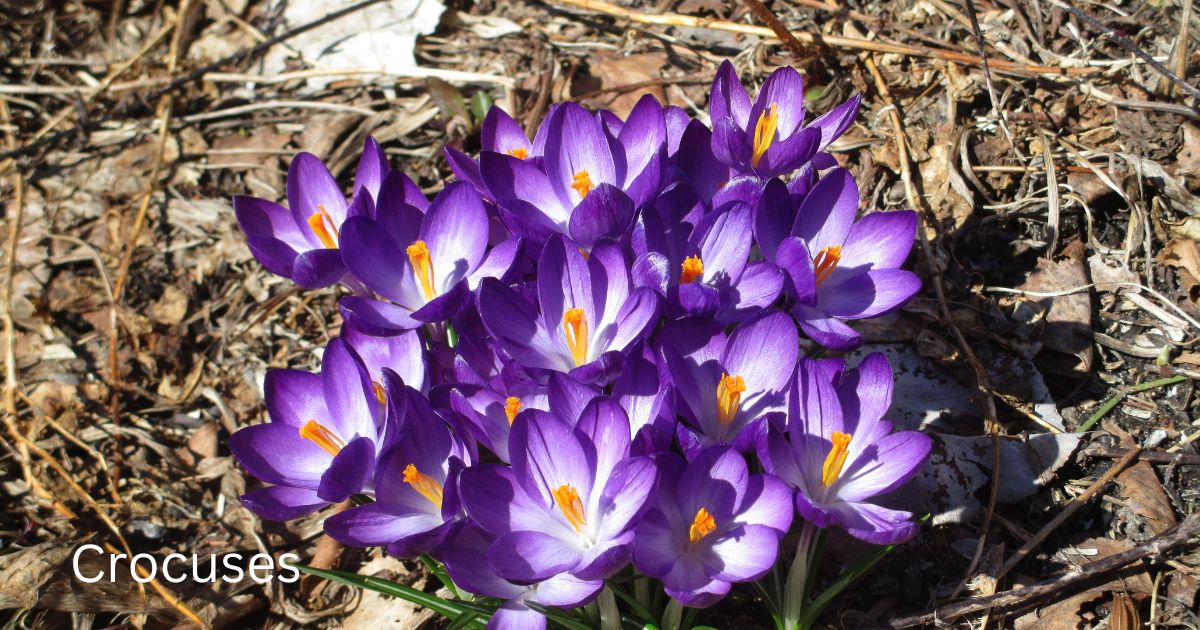Crocuses are like the early birds of the flower world, popping up just when winter’s chill starts to fade. Their vibrant colors can be a welcome sight after those dreary, cold months. These little beauties have a rich history and are loved by gardeners all over for their hardiness and charm.
One of the cool things about crocuses is that they’re perennials. That means you plant them once, and they come back year after year with little fuss. They’re the gift that keeps on giving. You might notice them blooming in early spring, but some varieties do their thing in the fall too, which adds a nice surprise to your garden plans.
Speaking of varieties, crocuses come in a wide range of colors and types, from big, bold blossoms to more petite, delicate ones. It’s like having a box of crayons for your garden. Whether you’re into deep purples, sunny yellows, or pristine whites, there’s a crocus for you.
To keep these gems thriving, you want to give them the right environment. Crocuses love sunny spots where they can soak up that spring sunshine. They aren’t too picky about soil, as long as it drains well, so a spot with good drainage is key. When it comes to water, these flowers are pretty low-maintenance. Just make sure not to overdo it. Too much water can lead to rot, and nobody wants that.
All these elements together make crocuses pretty darn easy to care for, making them a favorite for both newbie gardeners and seasoned pros. They’re like the low-effort high-reward flower, adding a burst of color with minimal fuss.
Preparing Your Garden: Planting Crocuses with Success
When it comes to planting crocuses, location is everything. You want to find that sweet spot where they get plenty of sunlight because crocuses crave sun to really show off their colors. Look for areas that aren’t overshadowed by trees or large structures.
Getting the planting depth and spacing just right can be a game changer. Aim to plant crocus bulbs about 3-4 inches deep. This depth offers them a little protection over winter and helps them anchor securely. Keep them about 2-3 inches apart to give each one enough space to grow without getting too crowded.
Timing is another key aspect. For spring bloomers, the best time to get those bulbs in the ground is early fall. You want to be ahead of the frost so the bulbs can settle and adjust. If you’re going for autumn-flowering varieties, late summer is your planting window.
Like any plant, crocuses aren’t immune to pests and diseases. Watch out for critters like squirrels and other rodents who might dig up the bulbs. A layer of mulch can sometimes deter these little diggers. As for diseases, well-draining soil and the right amount of sunlight can help prevent most fungal issues. Just keep an eye out for any unusual signs.
With these tips, planting crocuses can be straightforward and rewarding. Get the basics right, and you’ll enjoy those cheerful blooms when they burst into life.

The Eco-Friendly Benefits of Crocuses in Your Garden
Crocuses might be small, but they pack a punch when it comes to boosting your garden’s ecosystem. By planting them, you’re doing your bit to support local biodiversity, which is something our buzzing friends will thank you for.
One of the big pluses with crocuses is how they attract pollinators, especially bees. As one of the first blooms to appear after winter, they provide early food when not much else is available. Planting crocuses is like setting up a first aid station in your garden. It’s a simple way to help out those important pollinators.
For those thinking about sustainable gardening, crocuses fit right in. They require little maintenance and return year after year without needing much input, reducing the need for fertilizers and excessive watering. This makes them a perfect pick for eco-conscious gardeners.
Adding crocuses to your lawn or flower beds also adds a splash of color in barren patches, enhancing the overall aesthetic while improving soil health. Their roots can help aerate the soil, which in turn, benefits other plants nearby.
So, by integrating crocuses into your garden, you’re not only making your outdoor space look more beautiful but also contributing to a healthier ecosystem. It’s a win-win, so enjoy these beauties in the early spring months.
